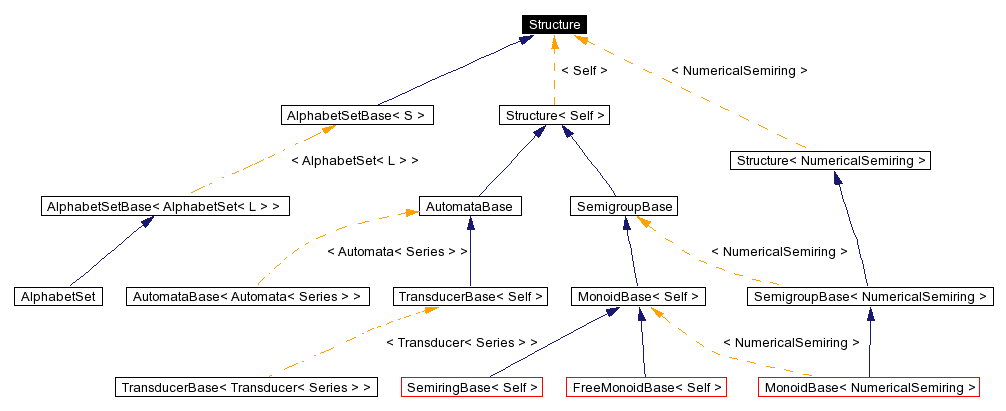
Inheritance diagram for vcsn::Structure:

Public Types | |
| typedef S | self_t |
| Exact type of the most derivated type in the hierarchy. | |
Public Methods | |
| template<typename T> bool | contains (const Element< S, T > &elt) const |
| Check if a given element is compatible with the structural element. | |
| template<typename OtherS, typename T> bool | contains (const Element< OtherS, T > &other) const |
Specialization of containts that always return false. More... | |
| template<typename T> bool | contains (const T &elt_value) const |
| Check if an anonymous value is compatible with a structural element. | |
| template<class T> Element< S, T > | choose (SELECTOR(T)) const |
| Choose randomly an element in the structure. | |
| self_t & | self () |
| Accessor to the real type. More... | |
| const self_t & | self () const |
| Accessor to the real type. More... | |
Protected Methods | |
| Structure () | |
| Protected constructor for class abstraction. | |
| Structure (const Structure &other) | |
| Protected constructor for class abstraction. | |
It provides:
contains method), choose method to pick randomly Element instances.
|
|
Specialization of Indeed, elements structured by a particular type are always incompatible with structural elements of another type. |
|
|
Accessor to the real type. This accessor is intended to be used by implementations in this class and derivated structures to obtain a reference to the structural element with its most derivated type. |
|
|
Accessor to the real type. This accessor is intended to be used by implementations in this class and derivated structures to obtain a reference to the structural element with its most derivated type. |
 1.2.14 written by Dimitri van Heesch,
© 1997-2002
1.2.14 written by Dimitri van Heesch,
© 1997-2002